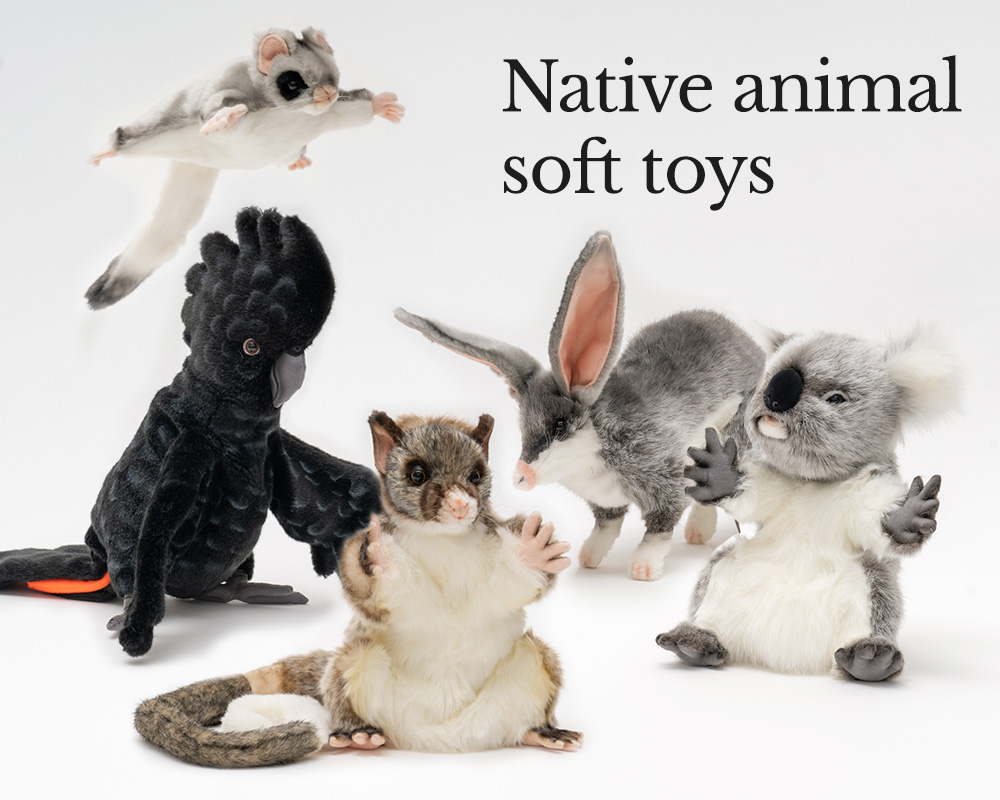A photographic guide to Australia’s bees
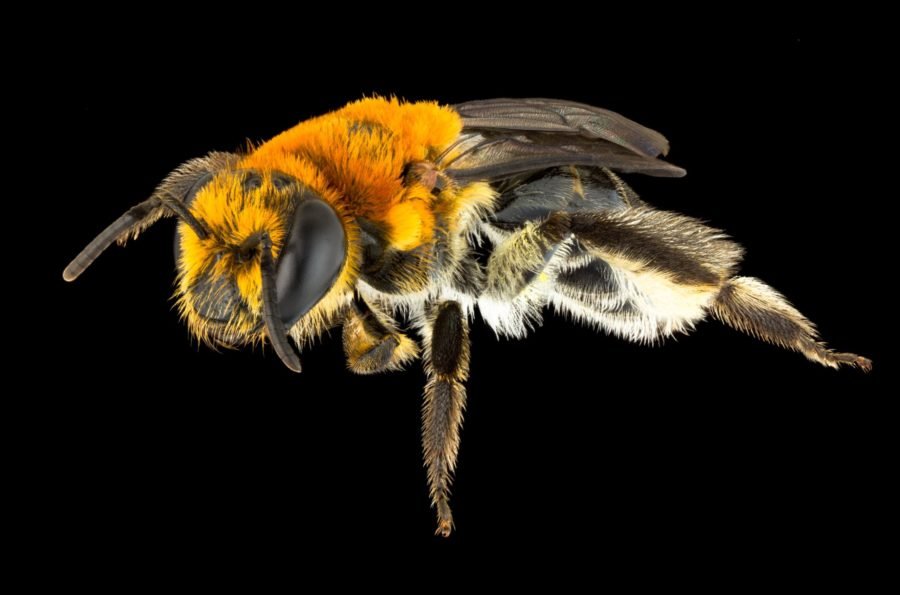
Green and gold nomia bee
Lipotriches (Austronomia) australica
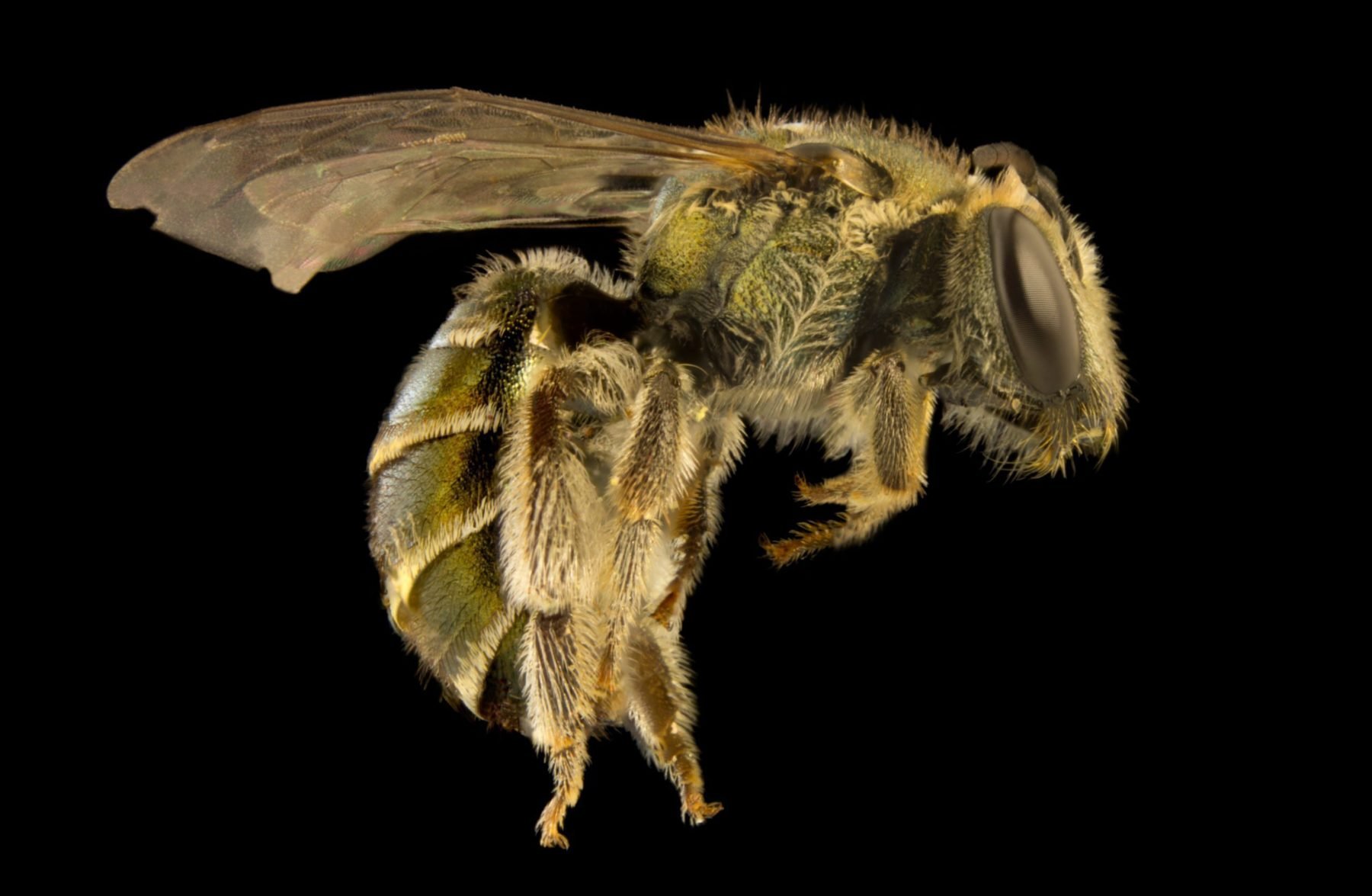
One of the first native bees that I ever photographed, this green and gold nomia bee is one of those that really kicked-off my passion for our native pollinators.
Leafcutter bee (male)
Megachile (Rhodomegachile) abdominale

Male leafcutter bees often have highly modified forelegs that are by and large designed for use during mating. Males will often rob their forelegs over the eyes of the female while mating; this is possibly used for species recognition. In this species, the forelegs are unusually long.
Golden-browed resin bee (female)
Megachile hackeriapis aurifrons
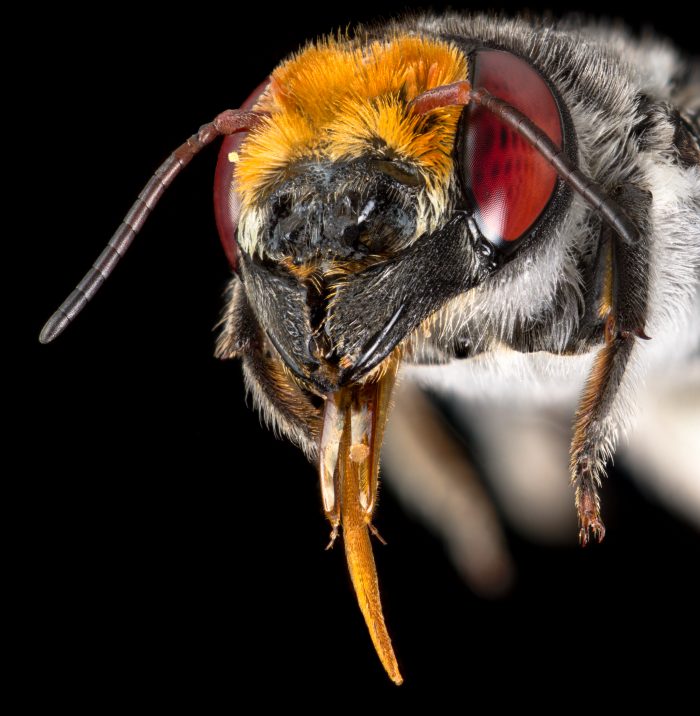
Distributed across all of mainland Australia I’d recommend everyone to keep their eyes open for these beauties. A large black bee with a red face and red eyes, they are sometimes hard to miss.
Colletis bee
Palaeorhiza cnemidorhiza parallela
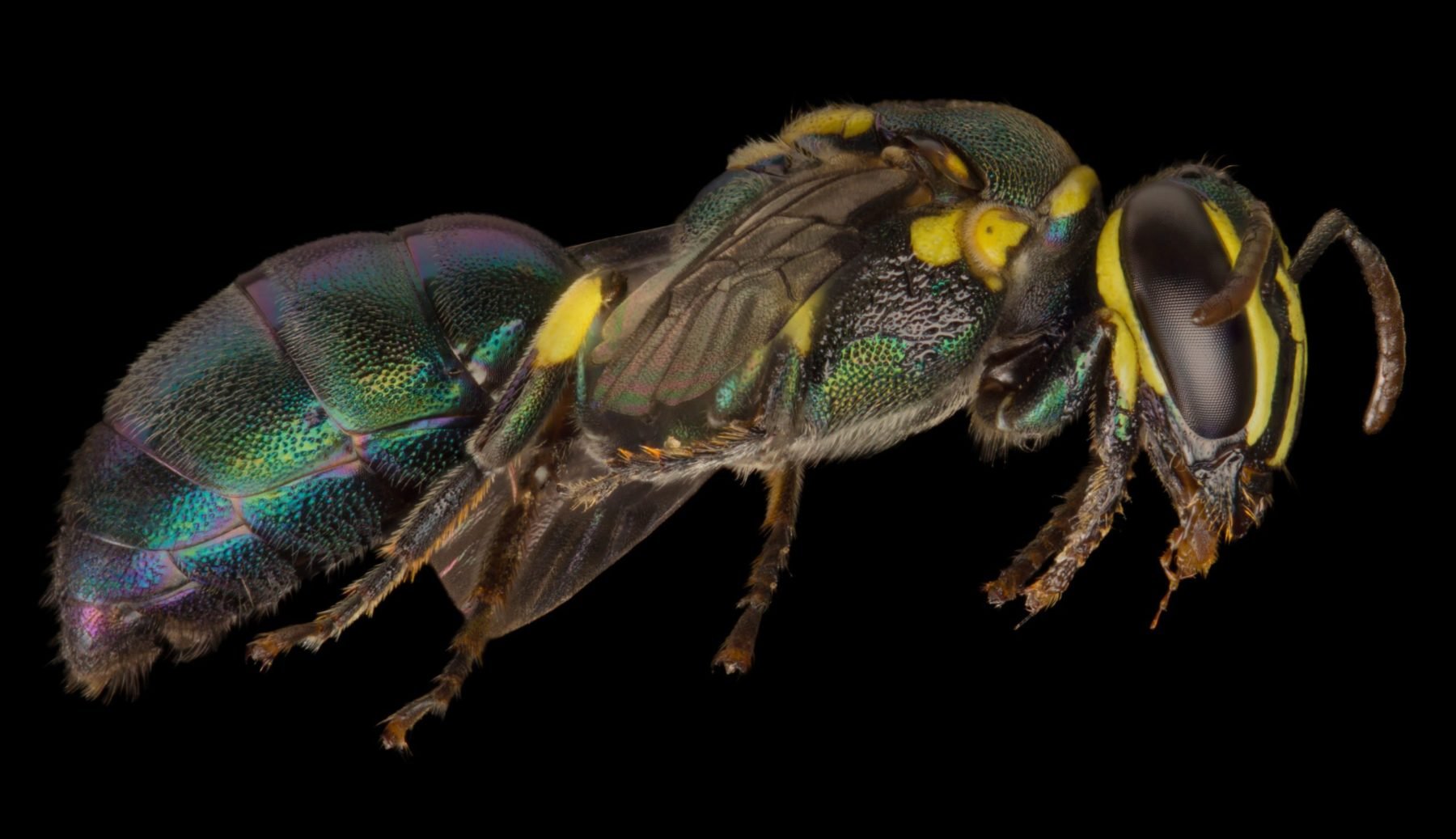
Caught in Rollingstone, Queensland this amazing colletid stunned me with its flambouyant colouration – I was particularly excited to see this individual through my camera!
Red singer bee
Amegilla asaropoda rhodoscymna
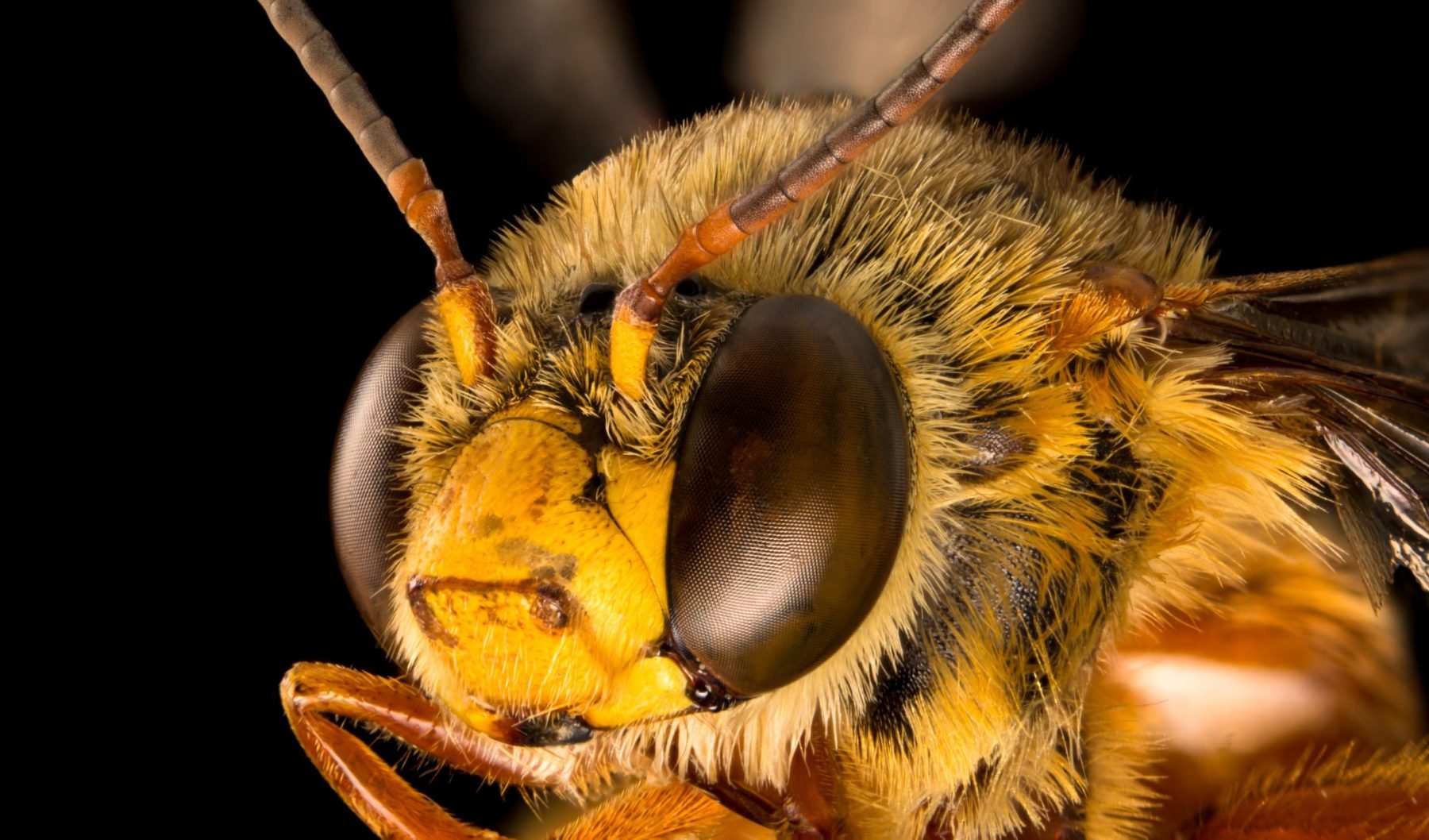
A flash of red and a quick buzz was all I got when this red singer bee flew by. After much chasing and many failed swings of my net I had to wait to see this boy land before I could catch him.
Reed bee (male)
Exoneura sp.
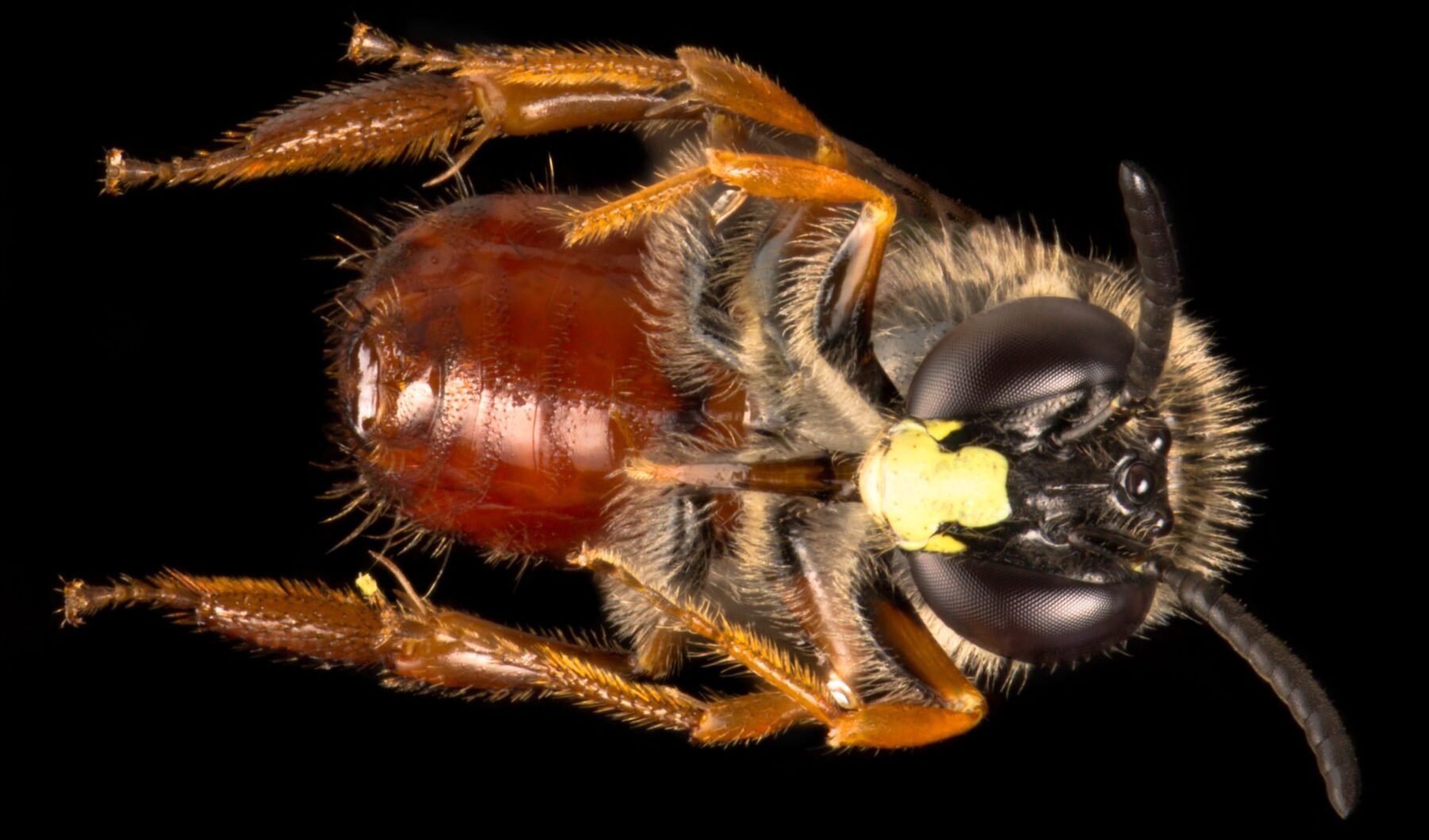
As the name suggests these reed bees often make their nests in reeds or hollow out small pithy branches, provisioning their young with pollen and nectar at the end of their little nest.
Plasterer bee (female)
Callohesma flavopicta

Callohesma bees are often tiny; this individual is only at 4 mm long. However, if you get the chance to spot one (often feeding on gum flowers) you will be greeted with a pleasant array of pale yellows, greens and oranges.
Colletid bee (male)
Leioproctus amabilis
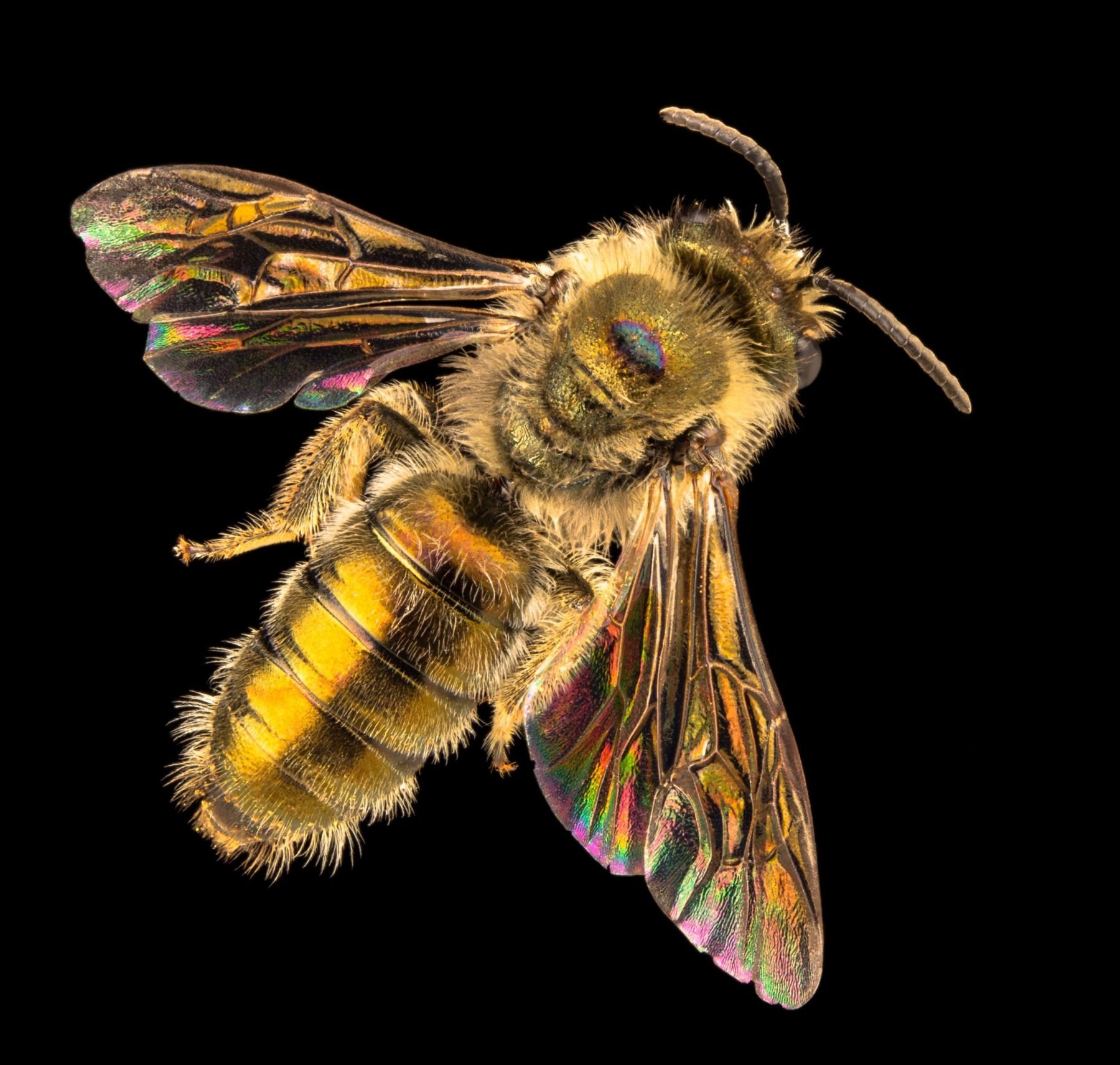
Found in Barrington, Tasmania this big colletid was foraging beside the introduced honeybee and bumblebee in a bee-friendly yard. While direct conflict with introduced pollinators is rare it has been found that introduced pollinators compete with their native counterparts for resources.
Colletid bee (female)
Leioproctus sp.
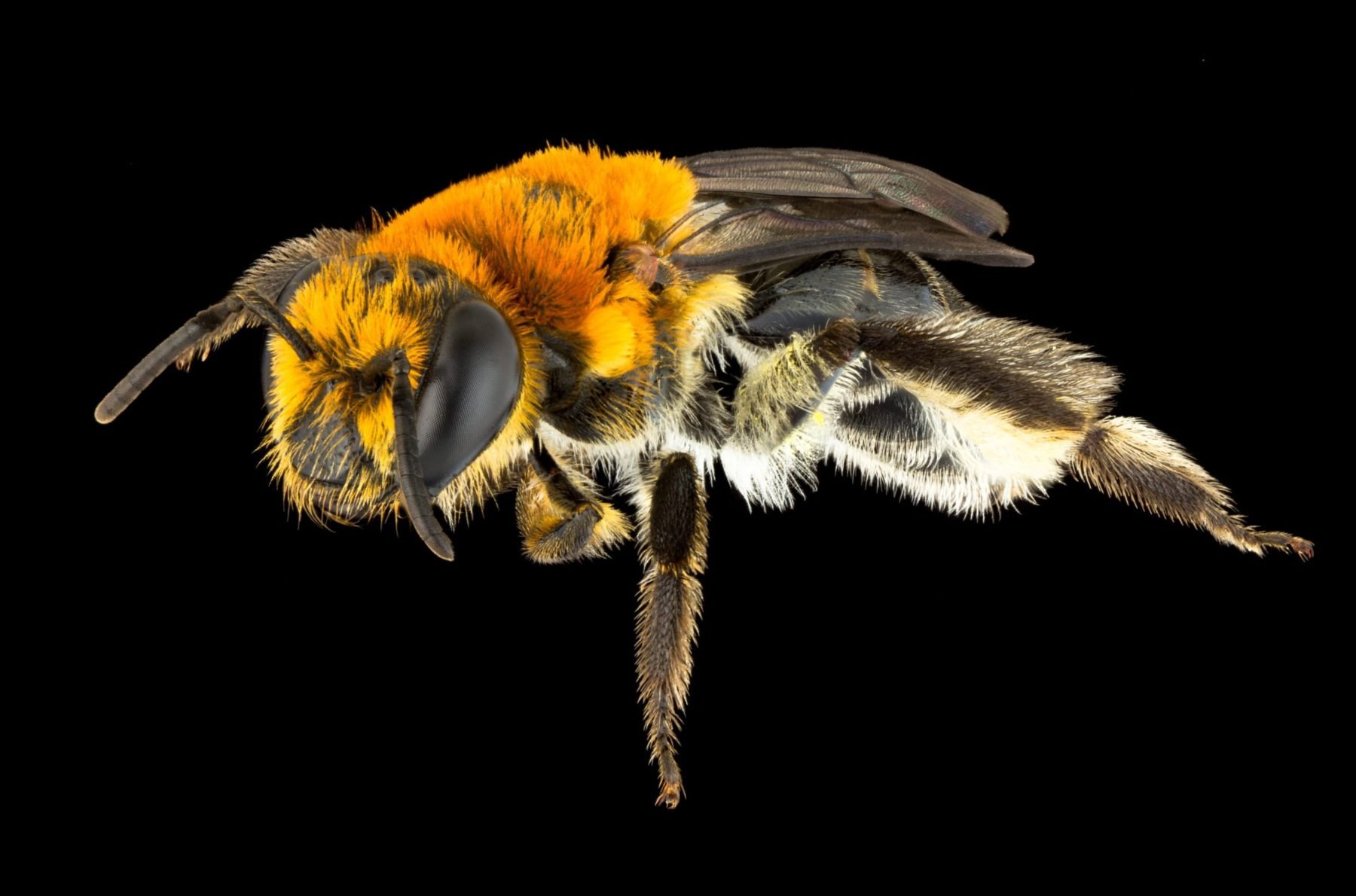
I am often surprised by how little we know of our diverse and important native bees. This female Leioproctus is yet undescribed. There are over 1600 native bee species already described but the real number of species in Australia is thought to lie somewhere between 2000 and 3000 species.
Leafcutter bee (female)
Megachile lucidiventris

Leafcutter bees typically have large and powerful mandibles for cutting circles out of leaves – commonly out of the leaves of roses, native ginger and other plants. They then use these cuttings to build a nest for their young.
Sweat bee (female)
Lasioglossum (australictus) lithuscum
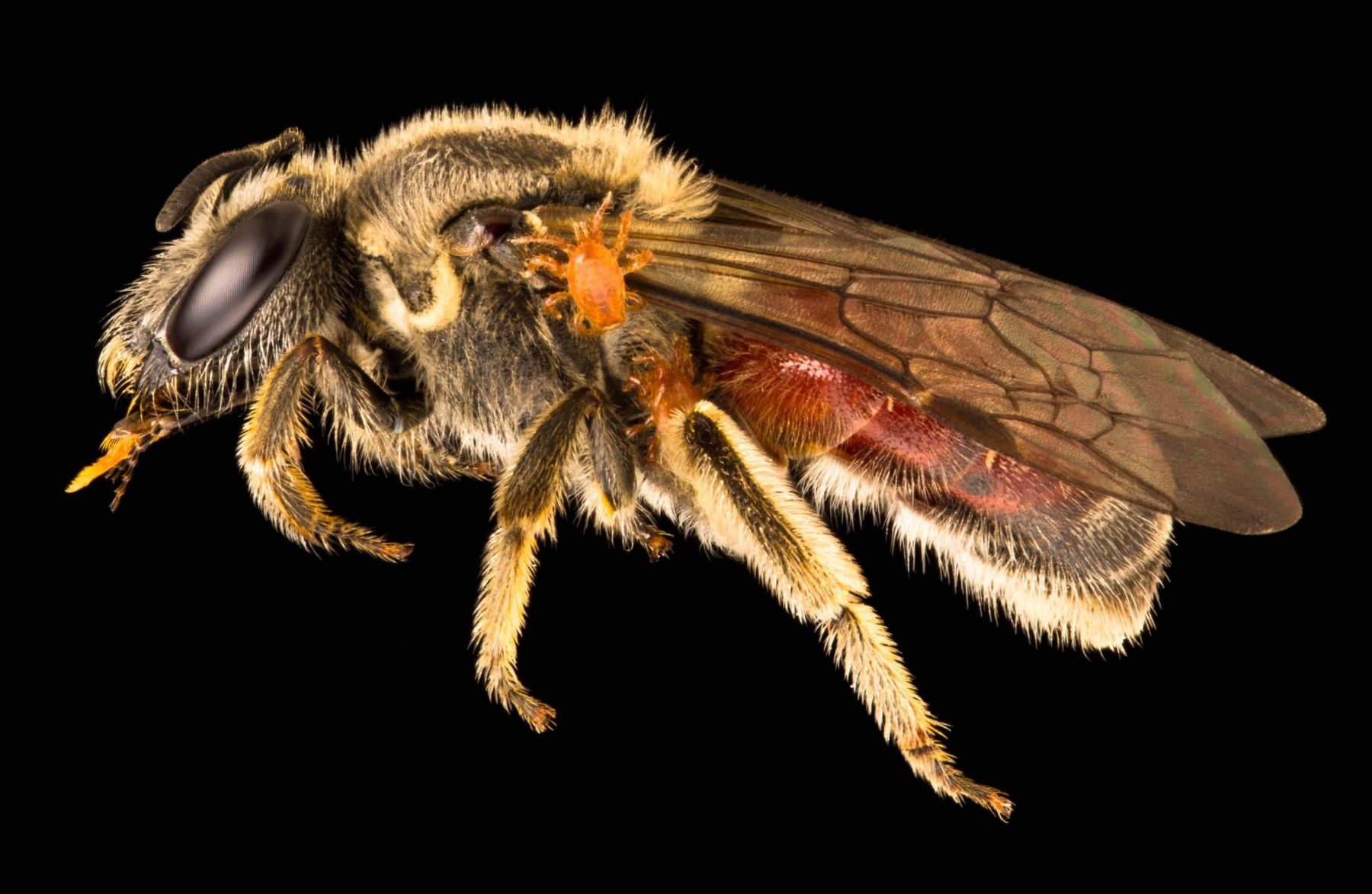
Bees often harbour mites. Unlike the mite Varroa destructor that attacks European honeybees many mites form mutual symbiotic relationships with bees. Mites eat nest fungus that might otherwise harm the bee’s young, while the bees transport the mites between their nests. This is one possible reason for why this sweat bee if carrying these large mites.
Halictid bee (female)
Homalictus urbanus
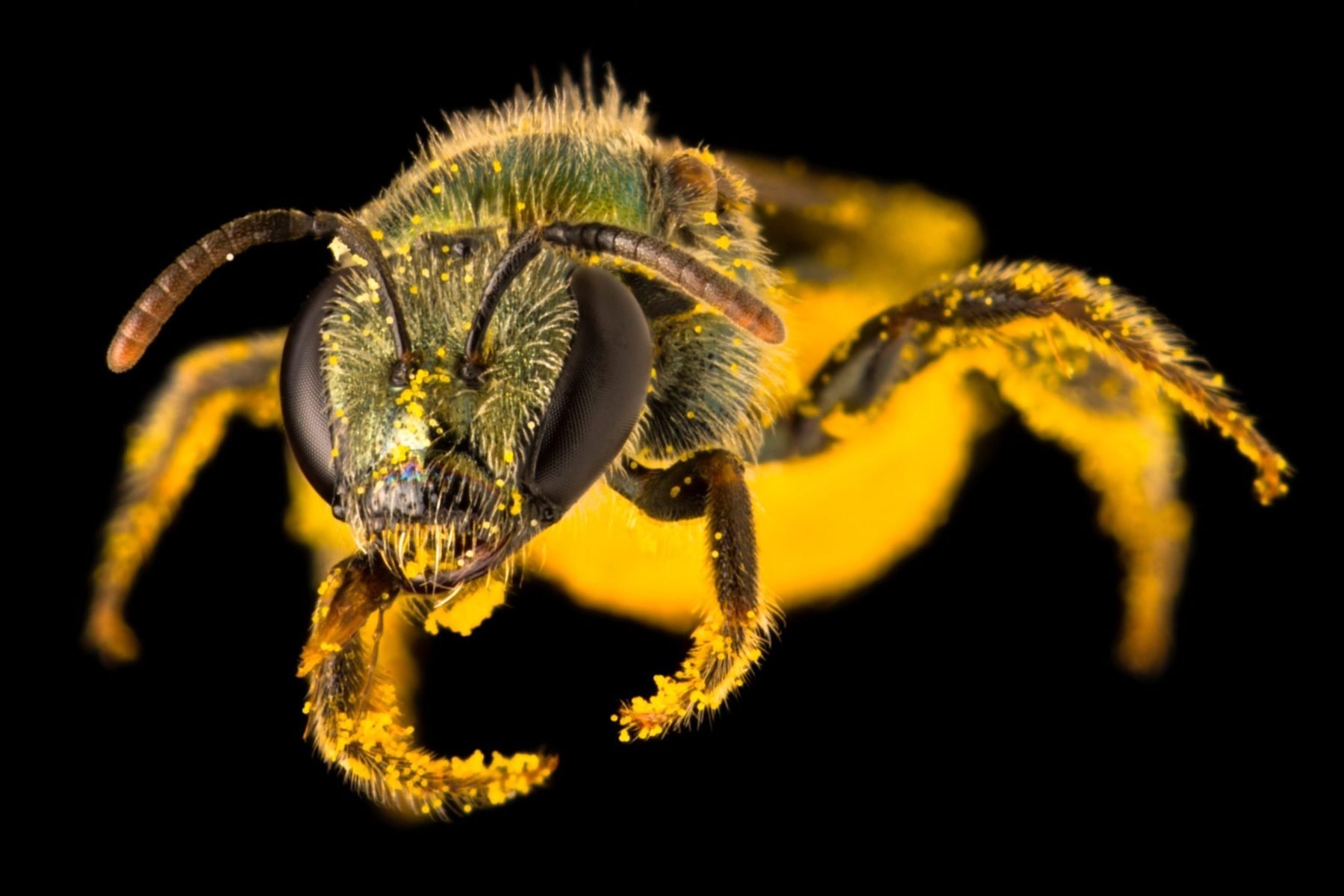
Homalictus bees are common across Australia. In shades of metallic green, blue, red and more these gems nest in the ground, often in reasonably sized aggregations.
Sugarbag bee (female)
Tetragonula sp.
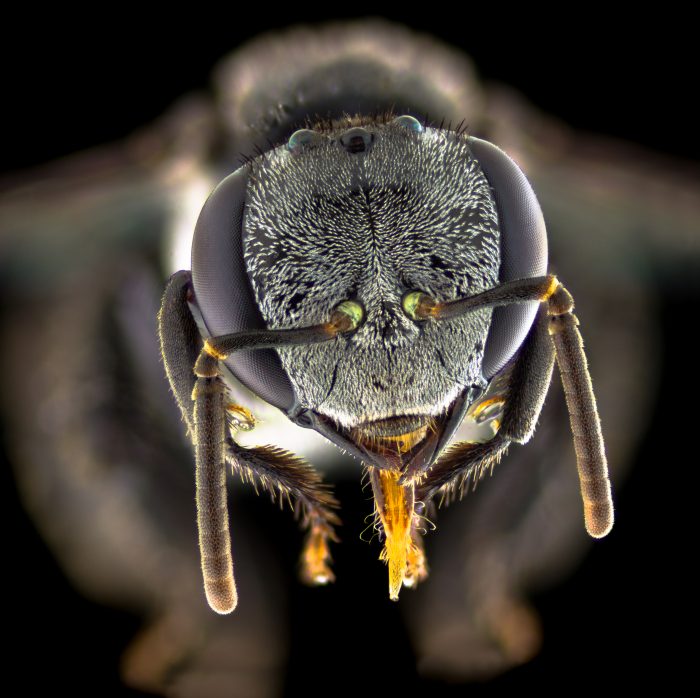
One of everyone’s favourite groups of bees – the stingless bees are often cultivated and kept in little hives for the occasional harvesting of honey or just the enjoyment of seeing these bees go about their daily tasks.
Golden-green carpenter bee (male)
Xylocopa lestis aeratus
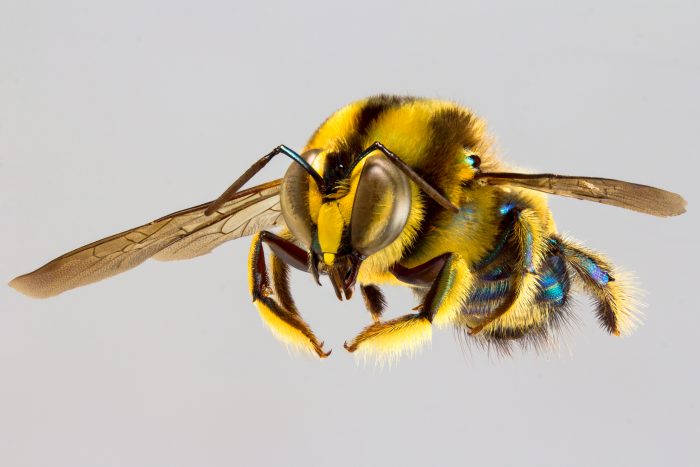
Big and fluffy, these male carpenter bees look quite different to their female counterparts, but certainly they are no less beautiful.
Neon cuckoo bee (female)
Thyreus nitidulus
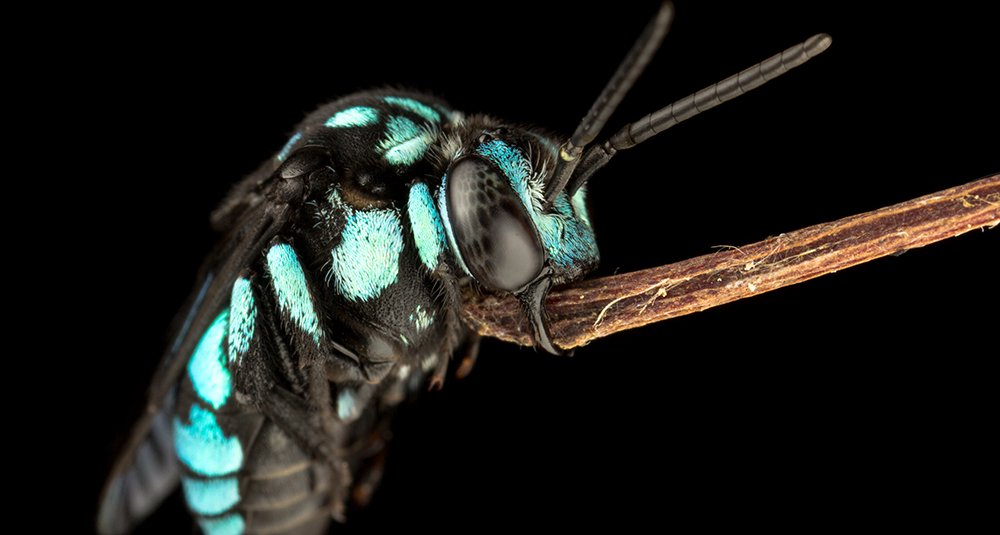
Many bees sleep outside of a nest at night, meaning that they can be find like this – roosting by locking their mandibles on branches and waiting for the light and warmth of the following day to begin their work once again.

